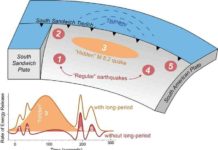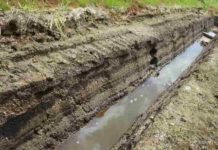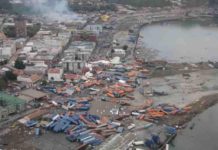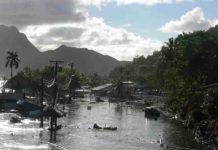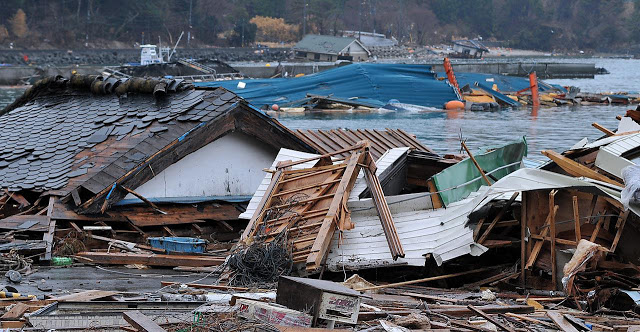
Japan’s lead in implementing sea defence improvements to guard against future disasters is an important reference point for other tsunami-prone nations, a study led by Plymouth University has suggested.
Before 2011, Japan was considered to be the best prepared nation on earth to withstand a large tsunami on its coasts, with structures specifically designed to afford sufficient protection to coastal settlements and critical infrastructure.
However, the size of the waves generated by the Great East Japan Earthquake in March that year led to sea defences and other coastal structures being overwhelmed, and in many cases completely or partially destroyed.
These included the brand new tsunami defence breakwater at Kamaishi, the sea dikes defending the international airport at Sendai, the 10m seawall in Tar? and, most critically, the seawall that protected the Fukushima Daiichi nuclear power station.
Since then, new engineering guidelines have been drawn up transforming Japan’s coastal defences, and devising new ways to keep its coastlines safe in the future.
But research in the International Journal of Disaster Risk Reduction suggests other nations in known tsunami risk areas have not yet followed suit.
The study, led by Dr Alison Raby, Associate Professor in the School of Marine Science and Engineering at Plymouth University, includes a full analysis of Japan’s history of coastal defence design and measures taken since 2011.
Dr Raby says: “After the 2004 Boxing Day tsunami in the Indian Ocean, much of the world’s efforts concentrated on tsunami early warning and evacuation. Such non-structural measures already in place in Japan were quite effective and meant that tsunami casualty figures – although exceeding 18,000 – were relatively low in comparison to the levels of devastation caused and the population living in the inundated areas. What the 2011 event did result in was Japan rethinking and revising its design codes for sea defence structures in an effort to limit inundation extent and devastation from future events. It is essential that Japan’s new sea defence plans are disseminated as widely as possible, both to inform industrialised nations and those that rely on international codes.”
The research, funded by the Engineering and Physical Sciences Research Council, enabled Dr Raby and other UK scientists and engineers to join an international team of experts on field trips to Japan. These two trips were conducted by the Earthquake Engineers Field Investigation Team and are part of a wider international effort to reduce the impacts of earthquakes globally.
During the initial visit in mid-2011, they were able to observe the levels of destruction caused, while a follow-up in 2013 enabled them to see the recovery, newly-completed sea defences and the design guidelines being implemented to mitigate against future catastrophes.
Their analysis involved translating the disaster scenario manual prepared by Japan’s National Institute for Land and Infrastructure Management, which features comprehensive material enabling designers to appreciate possible failure mechanisms. They also compared it with its European and US equivalents, and highlighted potential deficiencies.
“This is understandable in some regions where less developed countries face competing pressures for limited financial resources, but it is notable that this threat is not addressed in design codes for at-risk European countries,” the final paper says. “There needs to be more joined-up thinking between those who understand the tsunami sources and the implications for populations and infrastructure.”
Note: The above post is reprinted from materials provided by University of Plymouth.






